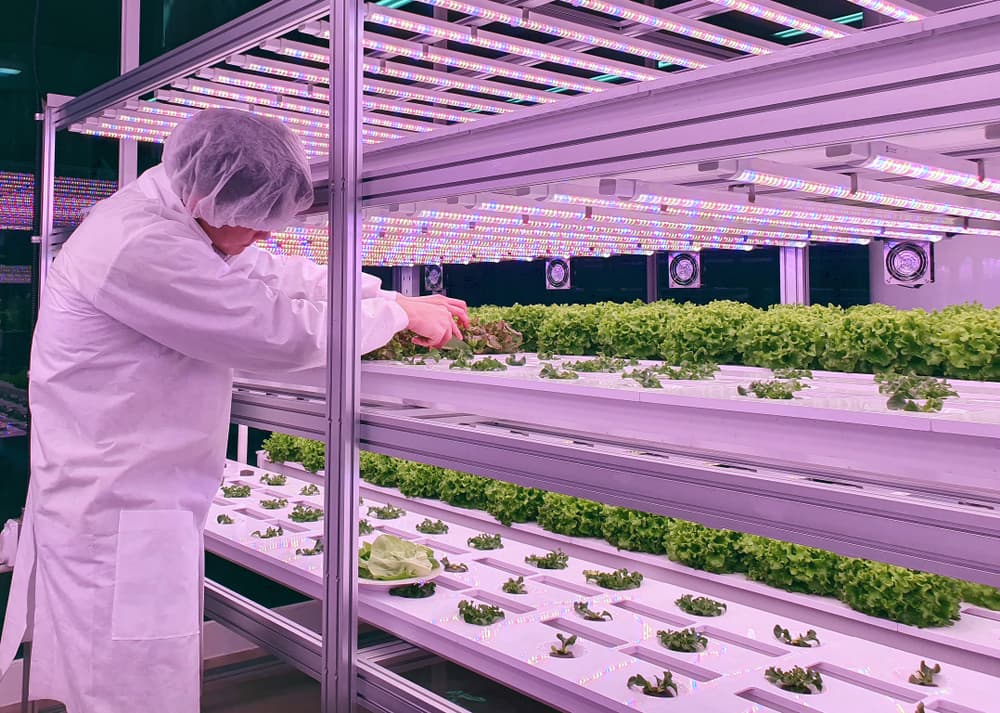Controlled environment agriculture (CEA) has become the answer for many growers looking to meet the increasing demand for reliable, consistent, high-quality crops, including medical and recreational plants.
CEA is a technology-based strategy that creates a safe environment and maintains optimal growth conditions within a closed structure—like a greenhouse or cultivation facility. With techniques such as drip irrigation, vertical cultivation, and automation, CEA optimizes resources like water, energy, space, money, and in turn, labor while increasing product quality. Within these systems, we sometimes see the implementation of hydroponics, aeroponics, and aquaponics.
What’s great about CEA is that it’s not limited to traditional greenhouse structures—it can also be applied to existing buildings and new construction. In this article, we will dive into different types of controlled environments and the benefits of each.
Examples of Controlled Environment
Now that we’ve covered the basics of controlled environment agriculture let’s look at some examples. In the following sections, we’ll explore these types of CEA and their unique benefits.
Greenhouses

Greenhouses are the most popular and widely-used type of CEA due to their versatility and efficiency. These transparent structures, made of glass or plastic, allow natural light to pass through while trapping heat and humidity inside. In this resulting warm, humid environment, crops can be grown year-round, making it ideal for cultivators looking to maintain a steady supply of consistent crop production regardless of the season.
In addition, greenhouses can be constructed on-site or off-site, which is particularly advantageous in urban areas with limited land space. Furthermore, modern greenhouses can be equipped with advanced climate control systems that optimize resources like water and energy, making them even more efficient and sustainable. Greenhouses also protect from pests and extreme weather conditions, resulting in higher crop yields and reduced crop loss.
Cultivation Facilities

Cultivation Facilities are often used to grow crops with strict requirements for light and environmental conditions, such as medicinal plants or certain herbs. They allow for more precise control over growing conditions than other forms of CEA, which can result in faster growth, higher quality, and higher yields.
Additionally, cultivation facilities can operate in urban areas without access to natural light or arable land, making them an excellent option for bringing local crops closer to local consumers. Although a cultivation facility’s initial investment and operational costs can be high, the upside is that the return on the investment can be seen over the years strictly from what may have been crop loss in traditional farming settings.
Hydroponics

Hydroponics is a type of soilless farming that uses nutrient-rich water solutions instead of soil for growing plants. This method enables growers to maximize growth by providing plants with the exact combination of nutrients they need without worrying about soil quality or environmental conditions. Plus, it requires less energy, water, and space than traditional farming and produces higher yields with minimal waste.
Hydroponics systems can be designed to be modular and scalable, allowing for easy expansion or relocation, and they can be used to grow a wide variety of plants, including vegetables, herbs, fruits, and even flowers. Additionally, since hydroponics systems don’t require soil, they can be set up virtually anywhere, from urban rooftops to arid deserts.
Aquaponics

Aquaponics is an innovative form of CEA that combines traditional aquaculture with hydroponics. This system uses the natural byproducts from the aquaculture tank to feed the hydroponic beds. The fish waste provides valuable natural fertilizer, and the water is filtered through the beds before being returned to the tank.
Aquaponics systems can increase crop production, reduce water usage, and provide an ecologically-friendly solution for growing indoors.
One interesting aspect of aquaponics is that it is a closed-loop system, meaning that the water is continuously recycled and reused, reducing the overall water usage of the system. Aquaponics systems can also grow various plants, from leafy greens to fruiting crops like tomatoes and cucumbers to tropical plants and even cannabis. This makes it a versatile and practical solution for indoor growing.
Aeroponics

Aeroponics is a form of CEA that grows plants in the air. With this growing method, the roots are suspended in the air and sprayed with a water and nutrient solution. The enclosed environment helps to capture the mist and ensure optimal growing conditions. Aeroponics is highly-efficient, using up to 90% less water than some hydroponic systems.
One notable advantage of aeroponics is that it allows for faster plant growth and larger yields due to the high oxygenation of the roots. This method also minimizes the risk of soil-borne diseases and pests, making it an ideal solution for growing clean and healthy crops. In addition, since the roots are suspended in the air, there is no need for soil or other growing mediums, simplifying the cultivation process.
Expert CEA Consulting: Optimize Crops with Bract & Pistil
No matter what type of crop you’re growing, controlled environment agriculture (CEA) is a technology-based approach that requires careful planning and management for successful results. CEA allows growers to optimize resources, create a safe growing environment, and produce abundant crops year-round. You can increase crop yield and quality with the right approach while reducing costs.
At Bract & Pistil, we are a team of experienced professionals providing consulting services to growers in various industries, including cannabis and hemp and varieties of both medicinal and recreational plants. With over 60 years of experience in agriculture, we understand our customers’ visions and can help turn them into a reality. We specialize in controlled environment and facility management, offering tailored solutions to your needs.
Contact us today to learn more about how we can help you achieve success in controlled environment agriculture.

